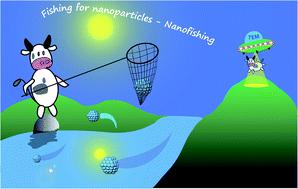当前位置:
X-MOL 学术
›
Faraday Discuss.
›
论文详情
Our official English website, www.x-mol.net, welcomes your
feedback! (Note: you will need to create a separate account there.)
Visualization of catalyst dynamics and development of a practical procedure to study complex “cocktail”-type catalytic systems
Faraday Discussions ( IF 3.3 ) Pub Date : 2020-2-7 , DOI: 10.1039/c9fd00125e Alexey S. Galushko 1, 2, 3, 4 , Evgeniy G. Gordeev 1, 2, 3, 4 , Alexey S. Kashin 1, 2, 3, 4 , Yan V. Zubavichus 2, 4, 5, 6 , Valentine P. Ananikov 1, 2, 3, 4
Faraday Discussions ( IF 3.3 ) Pub Date : 2020-2-7 , DOI: 10.1039/c9fd00125e Alexey S. Galushko 1, 2, 3, 4 , Evgeniy G. Gordeev 1, 2, 3, 4 , Alexey S. Kashin 1, 2, 3, 4 , Yan V. Zubavichus 2, 4, 5, 6 , Valentine P. Ananikov 1, 2, 3, 4
Affiliation

|
The ability to distinguish molecular catalysis from nanoscale catalysis provides a key to success in the field of catalyst development, particularly for the transition to sustainable economies. Complex evolution of catalyst precursors, facilitated by dynamic interconversions and leaching, makes the identification of catalytically active forms an important task, which is sometimes very difficult. We propose a simple method for in situ capturing of nanoparticles with carbon-coated grids directly from reaction mixtures. Application of this method to the Mizoroki–Heck reaction allowed visualization of dynamic changes of the dominant form of palladium particles in the reaction mixtures with homogeneous and heterogeneous catalyst precursors. Changes in the size and shape of the palladium particles reflecting the progress of the catalytic chemical reaction were demonstrated. Detailed computational modeling was carried out to confirm the generality of this approach and its feasibility for different catalytic systems. The computational models revealed strong binding of metal particles to the carbon coating comprising efficient binding sites. The approach was tested for trapping Cr, Co, Ag, Ni, Cu, Pd, Cd, Ir, Ru and Rh nanoparticles from solutions containing micromolar starting concentrations of the metal precursors. The developed approach provides a unique tool for studying intrinsic properties of catalytic systems.
中文翻译:

可视化催化剂动力学并开发研究复杂的“鸡尾酒”型催化体系的实用程序
区分分子催化和纳米催化的能力为催化剂开发领域的成功提供了关键,特别是向可持续经济过渡的过程。催化剂前体的复杂演化,通过动态相互转化和浸提的促进,使得催化活性形式的鉴定成为一项重要任务,有时是非常困难的。我们提出了一种简单的原位方法直接从反应混合物中捕获带有碳涂层网格的纳米颗粒。该方法在Mizoroki-Heck反应中的应用可以直观地观察到具有均相和非均相催化剂前体的反应混合物中钯颗粒的主要形式的动态变化。证实了钯颗粒的尺寸和形状的变化反映了催化化学反应的进展。进行了详细的计算建模,以确认该方法的一般性及其在不同催化体系中的可行性。计算模型显示金属颗粒与包含有效结合位点的碳涂层牢固结合。经过测试,该方法可捕获Cr,Co,Ag,Ni,Cu,Pd,Cd,Ir,来自含有微摩尔起始浓度的金属前体的溶液中的Ru和Rh纳米颗粒。所开发的方法为研究催化系统的内在特性提供了独特的工具。
更新日期:2020-02-07
中文翻译:

可视化催化剂动力学并开发研究复杂的“鸡尾酒”型催化体系的实用程序
区分分子催化和纳米催化的能力为催化剂开发领域的成功提供了关键,特别是向可持续经济过渡的过程。催化剂前体的复杂演化,通过动态相互转化和浸提的促进,使得催化活性形式的鉴定成为一项重要任务,有时是非常困难的。我们提出了一种简单的原位方法直接从反应混合物中捕获带有碳涂层网格的纳米颗粒。该方法在Mizoroki-Heck反应中的应用可以直观地观察到具有均相和非均相催化剂前体的反应混合物中钯颗粒的主要形式的动态变化。证实了钯颗粒的尺寸和形状的变化反映了催化化学反应的进展。进行了详细的计算建模,以确认该方法的一般性及其在不同催化体系中的可行性。计算模型显示金属颗粒与包含有效结合位点的碳涂层牢固结合。经过测试,该方法可捕获Cr,Co,Ag,Ni,Cu,Pd,Cd,Ir,来自含有微摩尔起始浓度的金属前体的溶液中的Ru和Rh纳米颗粒。所开发的方法为研究催化系统的内在特性提供了独特的工具。











































 京公网安备 11010802027423号
京公网安备 11010802027423号